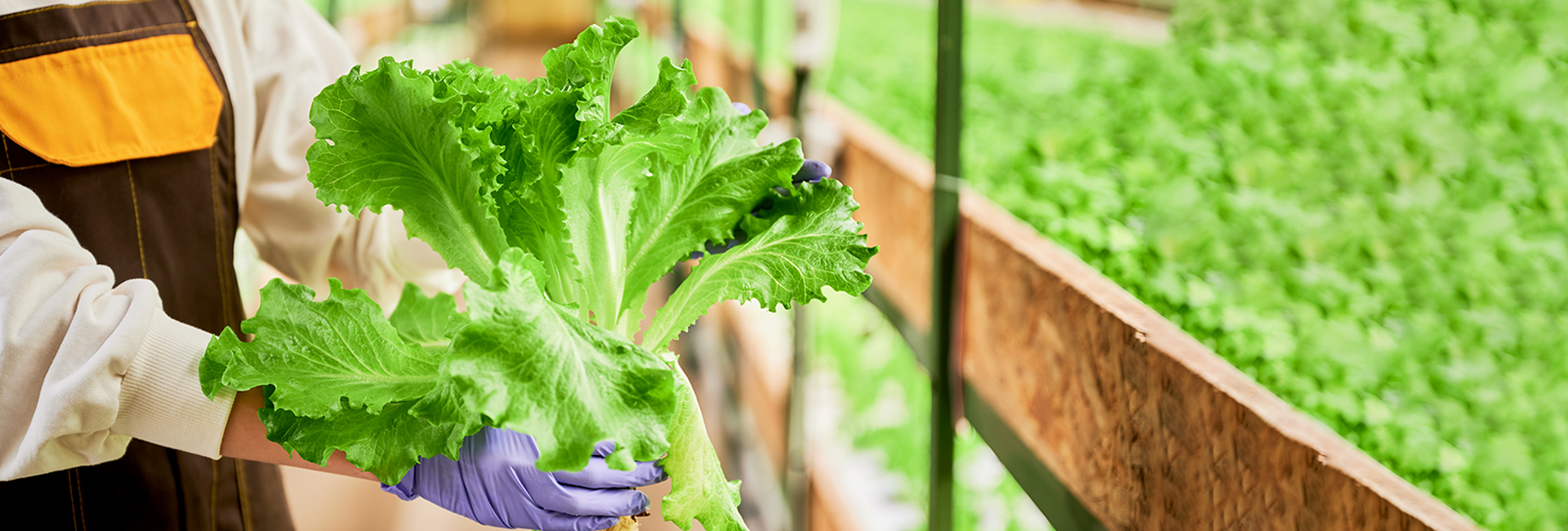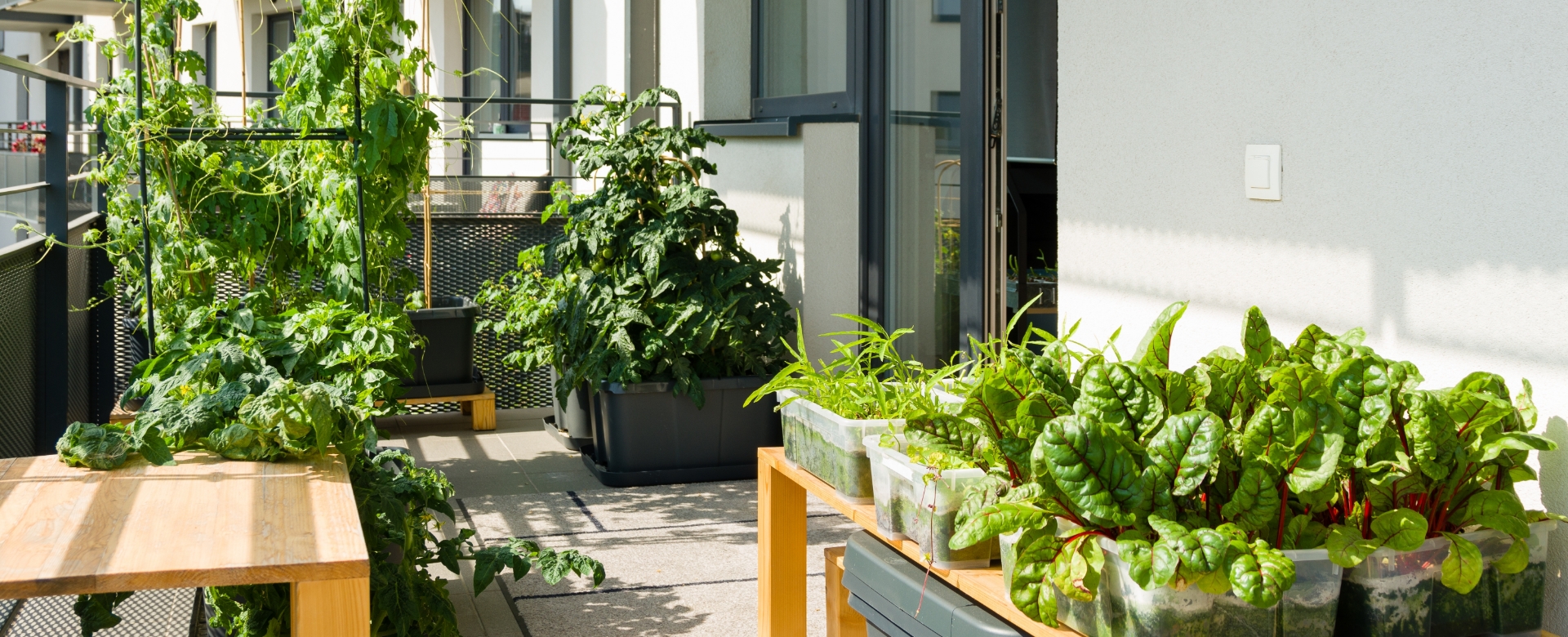Growing herbs indoors is a fast way to start gardening. That’s why I always suggest it to gardening-curious beginners (especially through the winter months here in Zone 5).
It costs next to nothing. All you need are some seeds, soil, a container and light to grow herbs indoors. And if you start with transplants, you can start harvesting herbs right away.
However, although you can grow herbs indoors year-round, there are some caveats. I like to tell new gardeners these are some things to think about for indoor herbs:
1. Choose the right herbs to grow indoors – The herbs you use most in cooking are the best to grow! However, some are best grown outdoors.
2. Use starts for fool-proof success – Perennial herbs are notoriously difficult to germinate. Use started plants instead.
3. Get the lighting just right – A windowsill works well, or you can use grow lights or a tabletop herb garden.
4. Create the ideal environment – Herbs need warmer temperatures (65 to 70°F during the day), air circulation and proper humidity.
5. Harvest your herbs responsibly! – Trim herbs when you want to flavor your food, but don’t take too much.
Keep reading for more details on each and some helpful tips for how to grow herbs indoors. This guide will get your herb garden started in no time!
I. Which Herbs Should You Grow Indoors?
To start, I’ll say this: You can grow almost any herb indoors, even some on the don’t list! But remember that herbs love direct sunlight, and therefore, if you don’t have a sunny windowsill, you’ll probably need to use grow lights.
These are my favorite herbs to grow indoors:
1. Rosemary
Rosemary is a perennial that does particularly well indoors over winter. In fact, rosemary isn’t cold-hardy and won’t likely survive winter in colder northern climates.
Pro Tip. A lot of container-grown herbs can be indoor-outdoor plants. Overwinter them indoors to protect them from cold temperatures and move them outdoors in late spring after the threat of frost is past.
2. Basil
Basil does like full sun. So, you’ll need a sunny, south-facing windowsill or grow lights to get conditions just right. Plus, basil also loves warm conditions and can even die back if the windowsill gets too cold.
But, as one of the most versatile cooking herbs, it’s a great indoor herb. I prefer varieties like Sweet Basil and Genovese, which can be kept as a perennial, if conditions are just right. Typically, I grow basil as an indoor / outdoor herb, moving my containers outside for the summer heat.
3. Chives
Chives thrive indoors and will do well in low-light conditions. Often, a west-facing window (which provides morning or afternoon light) is just right. Over time, you may need to divide your chive plant, as it outgrows its container.
4. Lemon Balm
A delightfully fragrant herb, lemon balm is another one that grows well indoors. You can use lemon balm to add a citrusy splash to your dishes, or brew lemon balm tea. Another benefit: Lemon balm spreads like crazy outdoors, so you can keep it contained indoors.
5. Mint
Mint is another aggressive spreader, which is why I love to keep it contained inside. Not to mention, it has many uses. Brew it into mint tea, use it as a garnish for cocktails, or even to just munch on the leaves. This one is easy to grow indoors and does OK with indirect sunlight.
6. Oregano
Oregano is great dried or fresh, and it’s popular in Italian cuisine. One reason I love to grow this herb indoors is that it’s so fragrant, making it a great addition to your houseplant collection. Generally, oregano loves full sun. Therefore, place it in a south-facing window that receives 6 to 8 hours of direct sunlight.
In addition to these popular plants, some other herbs to grow inside include thyme (trailing varieties are great), catnip (a must if you have a feline friend at home), sage, winter savory, tarragon (does well in very low-light conditions), and bay laurel.
A Few Herbs NOT to Grow Indoors
You can typically make any herb work indoors (including these listed below). But you’ll generally get better results planting these herbs outdoors:
- Dill – Dill grows big and rangy. As it matures, it will get floppy, which can increase disease risk.
- Cilantro – This is another herb that doesn’t do great in pots. But also, cilantropar is a sun-lover. If you don’t provide enough light, cilantro will get leggy and produce fewer leaves.
- Fennel – Fennel has a deep root system, and therefore, containers can stifle growth. This herb is best grown outdoors.
- Lavender – I love growing lavender, and I usually bring my container-grown lavender in to overwinter (in Zone 5). But because it needs tons of direct light and doesn’t like high humidity, it’s better to grow outdoors.
II. Starting Herbs from Seed Indoors vs Starts
Herbs tend to have very small seeds, and therefore, can take a lot of time to germinate.
For instance, rosemary, lavender and thyme can all take up to a month to germinate. I’ve had some success starting these indoors but now prefer to pick up transplants in spring. Not only does this save time, but it saves space on the seed-starting table.
However, plenty of herbs start easily from seed. A few I recommend include:
- Chives – Very easy to start
- Cilantro – You might get better results from soaking them.
- Basil – Another easy starter
- Marjoram – Great for direct sow in a container
Need some help? See our Seed Starting Guide for tips and tricks.
III. Light Requirements for Indoor Herb Gardening
Most herbs love full sun, at least 6 hours, which can be hard to re-create indoors. When herbs don’t get enough sunlight, they can get leggy and spindly, and they won’t produce as much foliage. One option is to stick with herbs that do well in part shade, like chives, tarragon, or oregano. These are also great options for winter greenhouse gardening.
For lighting, you have two options: A sunny windowsill or grow lights. Here’s how they relate to herb gardening:
Windowsill
South-facing windows receive the most direct afternoon sunlight. Therefore, south-facing windows will get hot during the afternoon peak hours. This is great for herbs like basil, rosemary, cilantro and marjoram.
East- and west-facing windowsills receive bright sun in the morning or afternoon for about 6 hours. This provides ideal conditions for part-shade loving herbs like chives, mint, and lemon balm.
Pro Tip. Be sure to rotate your plants so the full plant gets sun.
Grow Lights for Indoor Herbs
If you don’t have a particularly sunny windowsill, you need to use artificial light. Generally, you don’t need to go crazy and purchase an expensive light. PennState Extension recommends:
Using two 40-watt florescent bulbs about 6-12 inches from your plants for 14-16 hours per day. A tabletop hydroponic herb garden is another solution that’s easy to use.
IV. Indoor Herb Growing Conditions
There are four main points to think about: air circulation, soil, warmth, humidity, and drainage. Here’s a closer look at these areas:
1. Temperatures
Most herbs come from the Mediterranean and warmer climates. Warmth is important for optimal growth, photosynthesis and growth. Aim to keep your plants above 65°F during the day and above 50°F at night.
If you’re growing in a windowsill, be careful. Temperatures will drop during a very cold day. Some herbs can survive down to 40°F, but others are very cold intolerant (like basil).
2. Humidity
Humidity helps your herb plants regulate water loss. Less humidity reduces evaporation from their leaves, which keeps them plump and healthy. However, if you’re running your heater in the winter, humidity levels drop.
A few ways to offset this include grouping your plants together (to create a microclimate) or using a pebble tray. Just fill a normal drainage tray with pebbles and play your plants on top (but not in the water). As the water evaporates, humidity increases.
3. Air Circulation
Plants need circulation for two main reasons. It brings in fresh CO2 for photosynthesis, and it helps to prevent moisture build-up, which can cause disease. The problem is that there generally isn’t a lot of air movement indoors.
You can create air circulation with a small fan. Or on warmer days, by opening a window near your plants.
4. Drainage (and Soil)
Plants gather nutrients and water through their roots. But when the soil is waterlogged, oxygen is pushed from the soil, which disrupts photosynthesis and can lead to root rot.
Herbs thrive in well-draining soil. In fact, an herb like lavender prefers sandy, low-nutrient soil. To improve drainage, first make sure your pots have ample drainage holes. And second, improve dense soil with coco coir, perlite or compost to improve drainage. If you’re starting seeds indoors, get a seed-starter mix and transplant to a good potting soil as they mature.
V. Harvesting (Without Killing!) Your Herbs
You’re making a pesto and need a TON of basil. Will you kill the plant by harvesting leaves?
No! In fact, you should regularly harvest leaves by pinching them back or cutting them with sharp scissors. But there are a few rules to follow:
- Never harvest more than 1/3 of the plant.
- Wait to harvest until the plant has produced enough foliage to maintain growth.
- If you’re harvesting leaves, cut sprigs just below clusters of leaves.
- Cut parsley and chives at the bottom of the stem.
That’s it! Most herbs are resilient. If you take more than you planned, give the plant a little time to recover.
Wrapping Up
If you want to grow edible plants indoors, an herb garden is an easy way to start. You’ll get fresh herbs for your cooking or to garnish beverages and get the benefit of their delightful fragrance.
Although it’s easy to start, some herbs can be finnicky. If you’re struggling, follow these suggestions to get started. Or comment your favorite indoor herb growing tips below!
Get everything you need to start an indoor herb garden at Homegrown Outlet. From soil and containers, to grow lights, we’ve got it all. Visit a location today!




